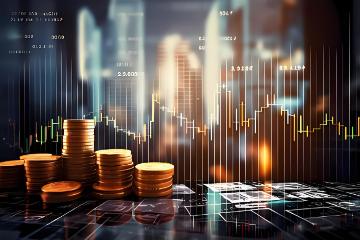Tariffs Spark a 25-Year Market Wave
Advertisements
Advertisements
With insights gleaned from over 4,200 institutional traders, the survey has sparked considerable dialogue regarding the tumultuous waves sweeping through markets, setting the stage for what many believe is just the beginning of a turbulent year ahead.
Advertisements
He noted that the timing of these volatility spikes is both unexpected and profoundInvestors have found the market's reaction to news events increasingly surprising, which suggests that this heightened sensitivity will likely persistIn previous years, markets displayed a more predictable volatility pattern, allowing traders to anticipate fluctuations based on historical data and trendsHowever, in the current environment, the erratic nature and rapid shifts have left them reeling, struggling to respond effectively to sudden market changes.
Advertisements
Chi Nzelu, global head of FICC electronic trading at JPMorgan, articulated that these uncertainties are expected to drive trades involving currencies such as the Canadian dollar and Mexican pesoHe commented, "From hedge funds to the retail market, the fluctuations in these major currencies are indeed significant and have triggered heavy trading activityWe are just beginning to observe some of the busiest trading days." This insight signifies that the shifts in tariff policies are not just momentary disruptions; they are reshaping the trading landscape as investors reconfigure their portfolios in search of stability.
- US Cuts Costs Without Rate Cuts
- AI Investment: Bridging Virtual and Real Worlds
- Why Investors Are Wary of Bank Stocks
- NVIDIA Faces AI Test After Stock Drop
- Europe's EV Market Stalling?
This ripple effect reveals that governmental policy and economic shifts affect all corners of the financial markets, extending beyond major institutions to retail investorsSince November of last year, the rise in import prices has rekindled inflationary fears, upending any prior expectations of significant interest rate cuts by the Federal ReserveRecent directives from the U.Sgovernment to impose a 25% tariff on all goods from Canada and Mexico, temporarily suspended following commitments from both nations to curb illegal immigration and drug trafficking, further exacerbate market instability, shaking investor confidence to its core.

This trend has been gaining momentum across different asset classes for several years now, even extending to less liquid securitiesNzelu highlighted the essential nature of electronic trading, particularly when tariff announcements emerge during traditionally low liquidity periods, such as Sunday evenings in LondonHe noted that investors are often left scrambling to find suitable counterparties for adjusting their portfolios when unexpected tariff news hits at inconvenient timesThe proliferation of electronic trading platforms thus offers a lifeline, granting traders the ability to transact promptly, access real-time market information, and identify appropriate trading partners irrespective of their geographical location.
Participants were categorized based on their usage of single dealer platforms (28%), multiple dealer platforms (38%), and the remaining 34% engaging in both typesCost reduction in execution and brokerage remains the dominant reason for opting for single dealer platforms, while concerns over information leakage are particularly salient for traders dealing in encrypted and cash equitiesThe varied preferences among traders for different platforms underscore the competitive nature of the electronic trading marketplace, prompting platforms to continually enhance their service quality to cater to the evolving needs of traders.
While concrete details remain under wraps, the prospect of policy adjustments offers a glimmer of hope to investors navigating the choppy waters of today's financial climateMany await clearer insights that could inform their investment strategies as they strive to adapt to the evolving market landscape.
Leave A Comment